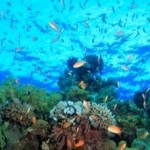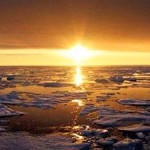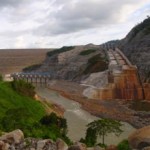 Tunis, Tunisia – A remote seasonal salt lake on the edge of the Sahara leads a list of 15 new Ramsar Wetlands of International Importance being declared in the country on World Wetlands Day, February 2.
Tunis, Tunisia – A remote seasonal salt lake on the edge of the Sahara leads a list of 15 new Ramsar Wetlands of International Importance being declared in the country on World Wetlands Day, February 2.
Chott Elguetar, a 7,400 ha site with an intermittent lake, is vital to the survival of the threatened Scimitar Oryx, Addax and Dama Gazelle. It also contains traces of human religious and industrial activity that have been dated back 40,000 years.
WWF has welcomed the announcement, noting that Tunisia’s designation of 15 new Ramsar Sites nearly doubles the country’s total, to 35.
“These designations are the result of a long process that requires effort and time from the government and conservation groups,” said Faouzi Maamouri, Coordinator of the WWF office in Tunisia. “But even with everything this country has been through recently, there is a strong commitment to protecting wetlands and the services they provide for both people and nature.”
The Ramsar Convention, so named for its signing in the Iranian city of the same name, is an intergovernmental treaty to maintain and conserve Wetlands of International Importance – or Ramsar Sites. These include rivers, lakes, marshes, mangroves, coral reefs and other natural or human-made wetlands.
The new sites in Tunisia include natural wetlands, oases and coastal lagoons, as well as structures such as dams and reservoirs. Many of them contribute directly to human well-being by supporting agriculture or fisheries. Others provide habitat for vulnerable or endangered birds and mammals.
Highlights in addition to Chott Elguetar include:
Marais d’eau douce Garaet Douza – 1,400 ha; a seasonal freshwater marsh surrounded by a circle of mountains, which give it a wonderful landscape. It is a good site for the promotion of Saharan ecotourism, as it is a natural wetland that has not been adversely affected by agriculture and harbours a wealth of biodiversity.
Barrage Oued Ermal – 620 ha; a dam and reservoir that provides a vital habitat for several waterfowl at various critical stages of their life cycle. It is a nesting place for Cattle Egret, Spoonbill, Eurasian Coot, Shoveler Ducks, Plover, Gadwall, Avocet, Black-winged Stilt, Northern Lapwing, Common Snipe, Marbled Duck, Marsh Harrier, Kingfisher, Water Pipit, Skylark and Chiffchaff.
 Barrage de Sidi El Barrak – 2,734 ha; one of the most important dams and reservoirs in Tunisia for irrigation and supplying drinking water to the cities of Tunis and Sfax.
Barrage de Sidi El Barrak – 2,734 ha; one of the most important dams and reservoirs in Tunisia for irrigation and supplying drinking water to the cities of Tunis and Sfax.
Tunisia isn’t the only country expanding its list of Ramsar Sites. Since the beginning of 2012, Indonesia, Estonia, Romania, France and Kazakhstan have added new sites.
“World Wetlands Day is a moment to reflect on the freshwater ecosystems that we all depend on,” said Denis Landenbergue, WWF International Freshwater Manager. “But the recent additions to the Ramsar List – and others to come in the near future – show that the work to conserve wetlands happens all year. As one of the five international organization partners that have been with the convention since the beginning, WWF is proud to support Ramsar.”
About WWF
WWF is one of the world’s largest and most respected independent conservation organizations, with over 5 million supporters and a global network active in over 100 countries. WWF’s mission is to stop the degradation of the earth’s natural environment and to build a future in which humans live in harmony with nature, by conserving the world’s biological diversity, ensuring that the use of renewable natural resources is sustainable, and promoting the reduction of pollution and wasteful consumption. For more information, visit wwf.panda.org.
Source: WWF.













